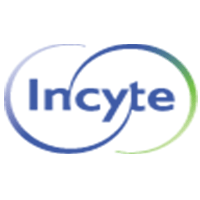National Treatment Guidelines for Myeloproliferative Neoplasms

- Amanda Bridges
- February 24, 2017
- News
lncyte Corporation is pleased to announce that ruxolitinib (Jakafi®) has been included as a recommended treatment for myelofibrosis in the new NCCN Clinical Practice Guidelines in Oncology (NCCN Guidelines®) for Myeloproliferative Neoplasms (MPNs).
Myelofibrosis is a rare bone marrow cancer. Ruxolitinib (Jakafi®) is the first and only therapy that is FDA approved for patients with intermediate or high-risk myelofibrosis.
Please visit NCCN.org to obtain the complete NCCN Guidelines® for MPNs. You will need to log in or create an account. Registration is free.
NCCN does not accept any form of industry or other external financial support for the guideline development program.
Incyte Corporation has provided financial support to the National Comprehensive Cancer Network® (NCCN®) for general sponsorship of programs and for the support of specific projects that are part of NCCN’s ongoing activities. Incyte has independent financial relationships with some of the NCCN Guidelines Panel Members participating in the NCCN Guidelines for MPNs. More information about these relationships can be found on the NCCN website.
Indications and Usage
Jakafi is indicated for treatment of patients with intermediate or high-risk myelofibrosis, including primary myelofibrosis, post–polycythemia vera myelofibrosis and post–essential thrombocythemia myelofibrosis.
Important Safety Information
- Treatment with Jakafi can cause thrombocytopenia, anemia and neutropenia, which are each dose-related effects. Perform a pre-treatment complete blood count (CBC) and monitor CBCs every 2 to 4 weeks until doses are stabilized, and then as clinically indicated
- Manage thrombocytopenia by reducing the dose or temporarily interrupting Jakafi. Platelet transfusions may be necessary
- Patients developing anemia may require blood transfusions and/or dose modifications of Jakafi
- Severe neutropenia (ANC <0.5 × 109/L) was generally reversible by withholding Jakafi until recovery
- Serious bacterial, mycobacterial, fungal and viral infections have occurred. Delay starting Jakafi until active serious infections have resolved. Observe patients receiving Jakafi for signs and symptoms of infection and manage promptly
- Tuberculosis (TB) infection has been reported. Observe patients taking Jakafi for signs and symptoms of active TB and manage promptly. Prior to initiating Jakafi, evaluate patients for TB risk factors and test those at higher risk for latent infection. Consult a physician with expertise in the treatment of TB before starting Jakafi in patients with evidence of active or latent TB. Continuation of Jakafi during treatment of active TB should be based on the overall risk-benefit determination
- Progressive multifocal leukoencephalopathy (PML) has occurred with ruxolitinib treatment for myelofibrosis. If PML is suspected, stop Jakafi and evaluate
- Advise patients about early signs and symptoms of herpes zoster and to seek early treatment
- Increases in hepatitis B viral load with or without associated elevations in alanine aminotransferase and aspartate aminotransferase have been reported in patients with chronic hepatitis B virus (HBV) infections. Monitor and treat patients with chronic HBV infection according to clinical guidelines
- When discontinuing Jakafi, myeloproliferative neoplasm-related symptoms may return within one week. After discontinuation, some patients with myelofibrosis have experienced fever, respiratory distress, hypotension, DIC, or multi-organ failure. If any of these occur after discontinuation or while tapering Jakafi, evaluate and treat any intercurrent illness and consider restarting or increasing the dose of Jakafi. Instruct patients not to interrupt or discontinue Jakafi without consulting their physician. When discontinuing or interrupting Jakafi for reasons other than thrombocytopenia or neutropenia, consider gradual tapering rather than abrupt discontinuation
- Non-melanoma skin cancers including basal cell, squamous cell, and Merkel cell carcinoma have occurred. Perform periodic skin examinations
- Treatment with Jakafi has been associated with increases in total cholesterol, low-density lipoprotein cholesterol, and triglycerides. Assess lipid parameters 8-12 weeks after initiating Jakafi. Monitor and treat according to clinical guidelines for the management of hyperlipidemia
- The three most frequent non-hematologic adverse reactions (incidence >10%) were bruising, dizziness and headache
- A dose modification is recommended when administering Jakafi with strong CYP3A4 inhibitors or fluconazole or in patients with renal or hepatic impairment. Patients should be closely monitored and the dose titrated based on safety and efficacy
- Use of Jakafi during pregnancy is not recommended and should only be used if the potential benefit justifies the potential risk to the fetus. Women taking Jakafi should not breast-feed
Please click here to see Full Prescribing Information for Jakafi.

